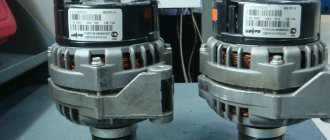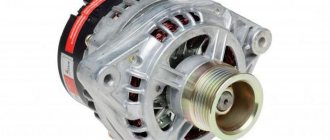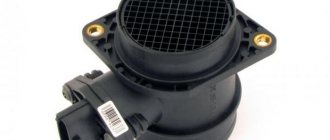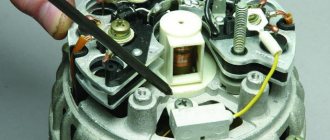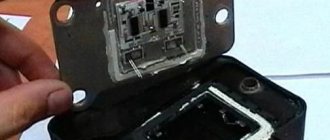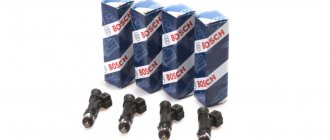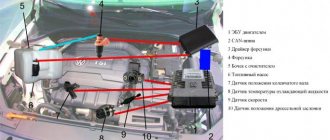The VAZ 21102 version is one of the modifications of the legendary Lada “Ten”. The main distinguishing feature is the 1.5-liter 8-valve injection engine, used for the first time in the line. Therefore, when choosing a modification of the VAZ 2110, the consumer wonders whether it is worth overpaying for the more expensive 16-valve engine of the next version 21103. Some say that it is worth it, because the dynamics of the car are improving. Another part of buyers is inclined to believe that eight valves are enough for the city, the main thing is that there is an injector, and the VAZ 21102 is the best option for purchase.
CAR HISTORY
In addition to the fact that the body of the Lada of the tenth family had smooth lines and was not at all similar to the body of the already boring “99th” model, the 110th model was able to introduce an abundance of new elements that had not previously been seen on vehicles produced by the Volzhsky Automobile Plant. Among the innovations are the presence of an adjustable steering wheel, glued windows, gas hood supports and air conditioning.
After they began installing a sixteen-valve power unit on the Lada 110, it became clear to everyone that “it’s better not to joke with Tazami,” since the car could even leave some foreign cars behind. The “Ten” was produced with three versions of equipment: standard, norm and luxury. Despite the stoppage of production of the Lada 2110 in the Russian Federation, the model is still produced in Ukraine today as the Bogdan 2110.
Work on the design of the 10th model began back in 1983. The very first car of this class was supposed to be a sedan with a rear-wheel drive layout. But the developments were never able to reach their own finish line. A little later, the company decided to start developing a vehicle on the VAZ-2108 platform.
However, the cost of this machine was exorbitant, so the developers decided to freeze this project as well. Over time, all the developments resulted in the VAZ-21099 car. At the first time of production, the car came with a carburetor power system, and after 2000 they decided to install distributor fuel injection (injector).
VAZ 21102, price
Engines of this format, multi-valve, began to be installed on middle-class cars only in the early 90s. In some ways, such engines certainly win, so it is not surprising that there are practically no live production models with eight-valve engines left abroad. And we still have it. Don't throw it away. Let's try to find advantages in this motor, and we have already found the first thing - price. Since cars of the tenth family are no longer produced, you can find 21102 on hand for an average of 80 thousand. This will be a car with average mileage without capital. The 16-valve version will cost 120-140 thousand. The difference is significant.
EXTERIOR
At the time of its release, the VAZ 2110 had a modern look, but at the same time, it became the subject of criticism and discussion among automotive experts. Many people think, looking at some elements, that the design of the car is unattractive. The most problematic area of the design is the rear wing.
The rear of the VAZ, when viewed in profile, seems too heavy. Although, if we compare it with the VAZ 21099, the new model has noticeably improved aerodynamic performance. And as a result of fairly good streamlining, the new VAZ 2110 has become more economical. There are no rectangular shapes here, like on the Samara, and overall the car looks neat.
Now bumpers began to be painted in body color, even in the cheapest modifications. This gave it a characteristic look, especially in those days when it was not always possible to find something like this even in foreign cars. And the most expensive modification - luxury, had additional headlights on the front bumper, and an additional stop light behind the rear window.
All body parts subject to corrosion are galvanized. The body part of the 10th Lada is made more than half of galvanized steel, which in itself increases anti-corrosion resistance.
However, even when purchasing a galvanized VAZ model, you won’t have to rest on your laurels, because those who did not do the anti-corrosion treatment could notice rust on the bottom of the car. Therefore, there is only one conclusion - anticorrosive should be done, regardless of galvanized steel.
Starting with the “norm” configuration, metallic paint is provided, and already in the “Lux” version the VAZ-2110 comes with fourteen-inch alloy wheels. Thanks to the glued glass, body rigidity increases, which is undoubtedly a plus, however, the gaps between body panels in some places can reach 7 millimeters.
If we talk about the door handles, they are made for a lower grip, and this in turn indicates that the vehicle was developed a long time ago. The lock cylinder, which is mounted separately from the handle itself, indicates that the Volzhsky Automobile Plant sedan is budget-friendly.
The appearance of the new model was clearly different from the already familiar “chisel shape” of the cars produced by the Volzhsky Automobile Plant. By reducing the drag coefficient, it was possible to reduce fuel consumption.
The dimensions of the car became larger in length, height and width, and the track along with the base was increased. There was also an increase in mass. Speaking of the latter, it is worth noting that the increase in weight allowed the “ten” to look more respectable, which raised it half a step higher in the table of ranks.
Because of this, changes had to be made to the “running”, although the most important decisions were left the same. Looking at its appearance, you notice that the “brainchild” of domestic automobile production has become heavier and duller. Although, if you evaluate each element, then everything is at its own level.
There are licked surfaces, powerful bumpers painted in body color, and a cute, albeit overly plump, “butt.” However, if you put all this together, then for unknown reasons it does not add up. The characteristic “chisel” grin that was on previous VAZ models is, fortunately, not to be found here.
The front glass of the car is glued in, which indicates the absence of a standard seal. The windshield wiper arm now has an aerodynamic clamp. If we talk about the luggage compartment (which includes the VAZ 2111), the opening has become wider and the loading height has become lower.
Engine tuning VAZ 2110 8 valves injector
Increase the power of the VAZ 2110 engine
. Let's consider the potential of the 2111 8V engine without replacing the cylinder head with a 16 valve one. The 103 16V engine and its modifications are mentioned in a separate article.
The easiest way to improve something is to replace the camshaft with an OKB Dinamika 108 or Nuzhdin 10.93, install a split gear, and adjust the phases. The output will be around 85 hp. at a minimum cost and a slightly more active motor. Let’s let the engine breathe freely, install a receiver, a 54 mm throttle body and a 4-2-1 spider exhaust, and we get 90-95 hp and dynamics at the Priora level. To this we add modifications to the cylinder head and intake manifold, lightweight valves, milling of the cylinder head, and the power will jump to 100 hp or more. To further increase power, it is recommended to increase the engine capacity of the 2111 to 1.6 liters by increasing the stroke to 74.8 mm. When using valves of increased diameter, lightweight valve plates, and program settings, the car will show 110 or more hp, but in this configuration it is necessary to select evil shafts with a wide phase and large lift. We will get an excellent sports engine for the VAZ 2110 with a power of 120-130 hp. and more.
INTERIOR
When starting to create the interior, the designers took into account some of the shortcomings of previous models and corrected them. Now the driver sits behind the wheel with his legs extended, and not as before, with his legs bent. The steering wheel itself has also changed its appearance, it has become much more beautiful. It has two points of support for the hands with a pillow, and it no longer blocks the visibility of the instruments. The designers have used soft plastic in the dashboard, which looks beautiful and feels good to the touch.
Thanks to this, the likelihood of any noise and squeaks is reduced. In new models, all large mechanical buttons are located on the sides of the dashboard. Climate control is intuitive.
The steering column has the ability to adjust the angle of vertical tilt and has a hydraulic booster. But, despite the updated steering wheel, its rim itself seems too thin to most. The rear seats are quite comfortable, but for three passengers it will already be a bit cramped. The luggage compartment has a volume of 480 liters.
The “Norma” package has front electric windows (it doesn’t matter whether there is a servo drive or not, they do not fully lower into the door), velor upholstery for seats and doors, as well as headrests on the rear sofa. The most expensive “Lux” configuration already has an on-board computer, heated rear-view mirrors and heated seats installed in the front.
The keys installed on the sides of the instrument panel make it impossible to forget that the car began to be designed back in the 1980s. Fuses and relays for the most important options of the car are located inside the car, on the left side under the steering wheel, which is very convenient.
In the famous “Samara” everything was not so convenient. We thought about loading narrow, long things - for this, the middle back of the rear sofa can be fully reclined, and the backs of the rear seats can also be reclined, but at a smaller angle.
Despite the still fairly limited space inside the car, updates to the front fascia and other elements have had a positive impact on the ergonomics of the cabin, which in turn has encouraged many consumers to buy the 2110.
The outside door handle is much better. The tongue from the famous “eight” disappeared, and now the door began to open by simply moving the lever up. Speaking about the doorway, it is worth saying that it has become quite convenient based on the width, but it is too small in height. Not to say that this will interfere, but the lack of headroom is noticeable.
However, the door itself no longer raises any complaints, partly thanks to the sharp upper corner. People of average height have no reason to be afraid, but those who are a little taller should be careful, as they can easily run into him.
In addition, the designers limited the opening angle of the door, which has only one intermediate fixed position. I was pleased that the threshold, which in 2108 was always covered with a layer of dirt in bad weather, now, thanks to the design features, always remains clean.
This point is very important, since when getting into a car you can easily get your clothes dirty if their edges touch the threshold. The driver is presented with a different dashboard, which no longer has the “oak” molded plastic – now the panel is made of soft elements reminiscent of the materials used in the VAZ “classic”.
Almost everywhere has become a little more comfortable thanks to the new upholstery of the chairs and the fleecy ceiling. Only the door trim remained molded, however, and it, in turn, became of higher quality.
Some nice touches include height-adjustable seat belts and door locking with central locking. The driver's seat has become more comfortable. The pillow and backrest were increased in width and began to distribute the load better.
You can no longer find that cushion in the lumbar region that bothers drivers, which was on the “eights”. Of course, there was no lateral support before and there is none now. The chair is still adjustable in only two positions, and the adjustments are still mechanical.
The gearshift lever of the VAZ 2110 was lengthened, which may be explained by the desire to reduce the effort when changing gears. The most important sensors - the speedometer and tachometer - now occupied the required space in the central part of the dashboard, and the direction indicators began to be placed on the sides. The center console has acquired indicators for the on-board control system.
Maintenance
In order to ensure maximum service life, it is necessary to change the oil in the VAZ 21102 engine according to the regulations. But in practice, owners of cars with such engines recommend changing the lubricating fluid along with the filter after 15 thousand kilometers. It is better to give preference to 10W-40 and 5W-40 lubricants.
Also, do not forget about the need to adjust the valves. It is recommended to do this after the engine has driven 20 thousand kilometers. It is best to contact a specialized service, where specialists will select suitable shims.
SPECIFICATIONS
POWER UNIT
The first VAZ-2110 was equipped with a carburetor, but especially for this model, with “automatic choke” without using the choke lever, which is present in conventional types of carburetor.
The VAZ 2110 engine had a volume of 1.5 liters and a power of 69 hp. pp., which contributed to economical fuel consumption - approximately 7.5 liters per 100 km. A little later, a 1.5-liter injection 16-valve engine debuted, developing 94 horses. It had a DOHC type gas distribution mechanism.
This engine reached the speed mark of 100 km/h in 12.5 seconds, and the maximum speed had already reached 185 kilometers per hour. The technical equipment of the Lada-2110, which had a sixteen-valve engine, looked quite decent compared to inexpensive foreign cars of those years. The last engine update took place in 2004 - then the volume was increased by 100 cubic cm.
The dynamic component of the 69-horsepower power unit is unlikely to impress even the driver of the 2106, however, reduced fuel consumption by 12 percent compared to the 99th often lured buyers. The maximum speed with such an engine is about 162 kilometers per hour.
Also, after a while, an injection 8-valve power unit 21102 was produced, the power of which was already 78 horses. The first hundred was reached in 14 seconds, and the maximum speed was 170 kilometers per hour.
Despite the more modest power in terms of technical components, when compared with 1.5-liter engines, the new engines boasted more increased torque. More importantly, the 1.6 16v valves did not bend when the timing belt broke, as often happened with 1.5 16v power units.
In the injection version of the engine, injectors very often fail, but you can repair them yourself or have them repaired by specialists. This video explains well how to clean and rinse the injectors yourself.
But very often when you do it yourself, you can make a lot of mistakes and break even a very working nozzle. Therefore, we advise you to contact specialists who can repair the injectors very quickly and efficiently and even with a guarantee. Why do we recommend it specifically - because they can even undertake such repairs that everyone refuses, they work throughout Russia and the CIS countries, they have direct supplies of spare parts from manufacturers, and there is express delivery.
In addition to the indicated engines, in the Russian Federation you can find the “Ten” with a two-liter Opell X20XEV power unit, which a little earlier was installed on the Opel Vectra A in one of the most powerful versions. Having such a powerful engine on board, the VAZ-2110 reached the first hundred in just 9.5 seconds, and the maximum speed limit rested at 205 km/h.
TRANSMISSION
The VAZ 2110 gearbox is represented by a five-speed manual gearbox with synchronizers in all main gears. The main gear is cylindrical, helical. The differential is conical, two-satellite. The clutch is single-disc, dry, diaphragm.
The car is easy to repair, and parts for it are not as difficult to find as for other cars. It’s not for nothing that many people recommend the Lada-2110 as their first car.
SUSPENSION
The front suspension is independent, with telescopic hydraulic shock absorbers, coil springs, lower wishbones with braces and a stabilizer bar.
The rear suspension consists of levers aggressively attached to the transverse support, coil springs that act as a spring element, as well as double-acting telescopic shock absorbers.
STEERING
Installation of a hydraulic power steering wheel is provided. The steering mechanism is rack and pinion.
BRAKE SYSTEM
All Lada-2110 models are equipped with disc brakes in front, which on the latest version are also ventilated.
Drum brakes were installed on the rear wheels. Engine modifications Lada 110
| Modification | engine's type | Engine capacity | Revolutions | Transmission | Acceleration up to 100 km/h, sec. | Maximum speed km/h |
| Lada 2110 1.5 | Petrol | 1499 | 5600 | Mechanical 5st. | 14 | 165 |
| Lada 21101 1.6i | Petrol | 1596 | 5200 | Mechanical 5st. | 13.5 | 170 |
| Lada 21102 1.5i | Petrol | 1499 | 5400 | Mechanical 5st. | 14 | 170 |
| Lada 21103 1.5i | Petrol | 1499 | 5600 | Mechanical 5st. | 12.5 | 185 |
| Lada 21104 1.6i | Petrol | 1596 | 5000 | Mechanical 5st. | 12 | 180 |
| Lada 21106 2.0i | Petrol | 1998 | 6000 | Mechanical 5st. | 10.5 | 205 |
| Lada 21108 1.5i | Petrol | 1499 | 5600 | Mechanical 5st. | 13 | 170 |
Natural habitat VAZ 21102
Summarizing this small study, we can say with confidence that the 16V nameplate will cost significantly more than a standard one and a half liter eight-valve engine. If you look at consumables and maintenance, the picture is quite impressive. The capricious engine of the 103rd Lada will not always put up with low-quality fuel, while the 21102 will gladly gobble up what it is given at any gas station, unless, of course, it is an outright surrogate. The design of a dozen with 16 valves increases the cost:
- only high-quality leaded gasoline;
- expensive timing drive system;
- replacement and maintenance of an expensive catalyst;
- increased fuel consumption at lower levels.
Consequently, for small cities with an average level of service and inconsistent quality of gasoline, it is better to choose 21102. Here, the pursuit of maximum speed is unlikely to justify the significantly higher costs of maintenance and the starting cost of the car itself. Therefore, the number of valves is not the main thing here. The main thing is to choose the right engine for its future habitat, which is what we sincerely wish for everyone.
SAFETY
The Russian VAZ-2110 car was also crash tested. The result of the checks carried out in Togliatti turned out to be quite good, when compared with Volga, which, out of the available 16 points, was able to get only a meager 2.
After the frontal impact, the front driver's door was in place, and there was not even a single crease on it, and the windshield pillar was only slightly bent. However, the front door did not open due to the fact that she had propped the back door open. This is not a hopeless option, because it is possible to leave the car using the right door.
But what happens to the mannequins? The sensors that were installed on them did not show any life-threatening overloads! Despite the fact that the driver roughly hit the steering wheel and the dashboard, and the passenger sitting next to him hit the front panel, the head injury rate does not exceed the safe limit - 650 units.
This makes it possible to conclude that the probability of getting a head injury in people who are wearing a seat belt is less than 5%. The important advantages of the sedan were confirmed - the strong power structure of the interior. The conclusion is the following - before soft-boiled, but the interior is intact. This was achieved thanks to safety bars that were welded into the front doors. The material of the beams is not light planks, but steel pipes.
The seat slides were also able to withstand the collision, again not on their own, but thanks to the modernized profiles of the retainer teeth. A small load when the dummy's head collides with the steering wheel was achieved because VAZ made it injury-proof.
The corners of the visor were rounded, and the front panel was made of soft plastic. But there were obvious large overloads on the chest from the seat belts, so the calibrated spring was compressed by 0.40 cm, and in the chest of the passenger sitting next to it by 0.45 cm.
This is partly due to the lack of an airbag, which would soften the result of a sudden and rough stop of the car. So, the load exceeds 800 kg.
On the 10, the steering wheel was shifted slightly back and up (0.95 and 0.45 cm, respectively). Moreover, the steering wheel moved to the right by 1.10 cm, and this is already exceeding the qualifying EuroCAP lateral movement limit.
Regarding the legs, there is a great danger of damaging them. For example, the right leg bears an impact of 730 kilograms. Even the pedals exceeded the permissible threshold - they went back by 205 mm, and according to European standards, a pedal offset of more than 200 mm is already a critical indicator.
Based on the results of calculations and summing up the results, the VAZ-2110 scored 4 points, which is twice as high as the Volga 3110, and the same as Svyatogor. If we talk about what the top ten lacks, these are modern seat belts, airbags, body modifications, changes to the lower part of the front panel and other pedals.
CRASH TEST
MODIFICATIONS
- VAZ-21100 - eight-valve carburetor, the volume of which is 1.5 liters (produced from 1996-2000);
- VAZ-21101 - eight-valve, the volume of which is 1.6 liters;
- VAZ-21102 – eight-valve, volume 1.5 liters;
- VAZ-21103 – sixteen-valve engine, the volume of which is 1.5 liters;
- VAZ-21104 - sixteen-valve power unit, volume 1.6 liters;
- VAZ-21106 – Engine from Opel GTI 2.0 16V – 2.0-liter sixteen-valve engine, developing 150 horsepower and capable of reaching a top speed of 205 km/h. The VAZ 21106 reaches the initial hundred kilometers per hour in 9.5 seconds;
- VAZ-21106s – created on the VAZ-21106 platform. The technical details are the same as for the VAZ 21106. It has the following modification: power steering, a unique interior, an electric sunroof, fog lights and a disc brake system, which was installed not only on the front wheels, but also on the rear;
- VAZ-21107 is a car with a sixteen-valve two-liter Opel engine, which is designed on the 21106 platform. This model was tuned for a sporty driving style, championships and rallies;
- VAZ-21108 - “Premier” - a version of the Russian sedan, which was slightly lengthened;
- VAZ-21103;
- VAZ-21109 – “Consul” is a four-seater limousine with an engine capacity of 1.5 liters. It reaches 5 meters in length;
- VAZ-2110-91 – “Rotor-Sport”. Production started in 1996 and ended in 2004. A 1.3-liter rotary piston power unit was used. This type of car is the fastest among its “family”. The maximum speed reaches 240 km/h. Reaches the first hundred in just 6 seconds. The car is tuned for circuit racing.
Dimensions and features of modification 21102
Let's look at the technical characteristics of the VAZ 21102: overall dimensions, engine, transmission, suspension. Let's start with the dimensions.
| Aspects | Indicators |
| Length | 4.265 m |
| Width | 1.676 m |
| Height | 1.42 m |
| Wheelbase length | 2,492 m |
| Front track width | 1.41 m |
| Rear track | 1.38 m |
| Clearance | 16.5 cm |
The body type of the car 1102, like the entire line, is a sedan. The car is front-wheel drive, has 4 doors and 5 seats. The luggage compartment volume is 430 liters. The fuel tank holds 43 liters of gasoline. The curb weight is 1020 kg, and the total weight is 1495 kg.
Modification 21102 is the second oldest among all the “ten”. The opinion that this version is a successor to car 21101 is erroneous. In 1996, AvtoVAZ launched the first model of the VAZ 2110 into mass production. The pilot version of the “ten” was experimentally equipped with a carburetor fuel supply system. But a few months later, the company's leading engineers introduced a new version of Lada. It was decided that a modern car, which is the Lada 110, should have the injection principle of gasoline injection.
In the same 1996, an engine with an injector was introduced into the next version of the Lada - 21102. However, the number of valves was not increased from 8 to 16. This modernization “overtook” only the VAZ 21103 in 1997. But model 21101 is the youngest of the entire line. The version went on sale in 2004. It is a copy of the first “ten”, but has undergone restyling and modifications to the engine.
In the case of the VAZ 21101, repairs are less urgent, because the car is newer than 21102.
EQUIPMENT AND PRICES
Today 2110 is no longer produced. The price on the secondary market varies from $3,000 (carburetor version) to $5,000 with an injector and a more decent appearance. The factory provided three modifications: standard, norm and luxury. The last of them was equipped with 14-inch wheels, an on-board computer, heated front seats, a spoiler and fog lights. In its standard configuration, the Lada 110 was almost empty.
However, after 2005, the standard modification improved slightly - now an electronic engine control system and an on-board computer were installed on the car. Moreover, for an additional fee, the car was equipped with a power steering wheel and electric windows.
The steering column could be customized. There were also ventilated brake discs, an immobilizer and air conditioning. In the production of body elements, only galvanized metal was used.
The car from Togliatti was many times superior to other models. For those drivers who love speed, they have developed a ten sports class, however, it is already in a different price category.
It is clear that the VAZ’s interior is inferior in comfort to many foreign cars, but it does not look ascetic. Everything looks harmonious and there is ergonomics, which can be improved if necessary. The seats are quite comfortable and have headrests. The ride of the car has become softer and more stable. Alloy wheels were added.
DRIVERS' REVIEWS
Most drivers who have ever owned or continue to use a VAZ-2110 to this day say that the car is inexpensive to operate and repair, has good front-wheel drive, starts up despite low temperatures, and is also the best car for a beginner. Also, the domestic vehicle turned out to be quite economical and simple.
However, at the same time, many car enthusiasts do not like the low seating position, poor quality assembly, the need to constantly monitor the timing belt, the creaking sounds of the front plastic panel, low comfort, frequent breakdowns, small internal dimensions of the VAZ 2110, and so on.
Among the domestic automobile industry, the VAZ-2110 is a pretty good model, but until 2007, because it was after this year that the Volzhsky Automobile Plant began to produce a more improved car.
Problems
But despite a fairly large number of positive factors, the VAZ 21102 engine with 8 valve injector inherited almost all the shortcomings from its predecessor. Many car owners note that they constantly have to deal with the following problems:
- Availability of additional sensors. Installing the injector led to the need to install a mass air flow sensor and an engine control unit. This made the design somewhat more complex, which led to frequent electronic failures.
- Fogging and constant leaks are a common problem, without which it is impossible to meet this power unit. As a rule, it is worth looking for the place of lubricant leakage on the oil seals, or at the junction of the valve cover with the block head.
- Domestic parts are not of particular quality, especially those used in the cooling system, which can lead to overheating. First you need to check the functionality of the thermostat, and if it is working, then examine all the pipes for cracks.
- Since hydraulic compensators are not provided in the engine design, a broken thermal clearance of the valves can lead to noise during operation. But if adjusting the valves did not help, then there is a possibility that the knocking is due to wear on the pistons.
ADVANTAGES AND DISADVANTAGES
ADVANTAGES OF THE MACHINE
- Available service;
- Availability of spare parts;
- Possibility of repairs “in the garage”;
- Front-wheel drive;
- 16-valve injection engine;
- Improved security system;
- Low fuel consumption;
- Suspension adapted to poor-quality road surfaces;
- There is a hydraulic power steering wheel;
- The steering column can be adjusted;
- Air conditioning can be installed;
- Improved front panel.
DISADVANTAGES OF THE CAR
- Corrosion of metal;
- Small resource of some spare parts;
- Build quality;
- Unbalanced operation of the stove;
- Low sound insulation of the cabin;
- Constant monitoring of the timing belt;
- Equipment.
- There is little free space inside the car;
- It will be uncomfortable for three adult passengers to sit in the back.

